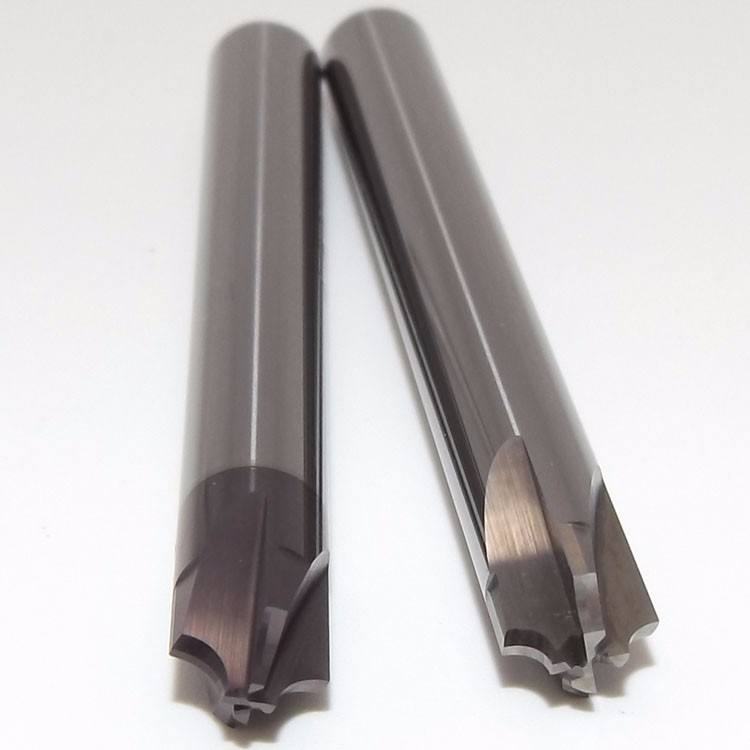What are the wear types of tungsten steel milling cutters?
Abrasive wear
Machining materials often have some very hard particles, these particles will form grooves on the surface of the tool, which is the grinding loss. All surfaces are worn, especially the rake face. In addition, although the wear of hemp occurs at various cutting speeds, the wear caused by other reasons is not obvious due to the low cutting temperature at low cutting speed, so it is mainly the abrasion of abrasive materials. The lower the tool hardness is, the more serious the grinding damage is.
Cold welding wear
In cutting, there is a large pressure and strong conflict between the workpiece, cutting and the front and rear cutting edges, so cold welding will occur. Because of the relative movement between the conflicting pairs, cold welding will produce cracks, which will be taken away by one side, resulting in cold welding wear. Cold welding damage is usually severe under medium level cutting conditions. According to the experiment, ductile metal material has better cold welding resistance than plastic deformation metal material; multiphase metal material is smaller than single side metal material; chemical substance of metal material is less than single material cold welding tendency; B group element element in metal element table has little tendency to cold welding with iron. When cutting high speed steel and cemented carbide at low speed, cold welding is more severe.

Dispersive wear
In the process of high temperature cutting and the contact between workpiece and tool, the chemical elements on both sides disperse with each other in solid state, changing the composition and structure of the tool, making the surface of the tool brittle and increasing the tool wear. Dispersion always insists that objects with high depth gradient are continuously dispersed to objects with low depth gradient. For example, cobalt in cemented carbide rapidly disperses into fragments and workpieces at 800 ℃, and tungsten carbide decomposes into tungsten and carbon and disperses into steel. When the cutting temperature is higher than 800 ℃, the carbon atoms in the polycrystalline diamond will transfer to the surface of the workpiece with high dispersion strength to form a new alloy, and the surface of the tool will be graphitized. Cobalt and tungsten are seriously dispersed, while titanium, tantalum and niobium have strong dispersion resistance. Therefore, YT cemented carbide has excellent wear resistance. Ceramic and PCBN cutting, temperature up to 1000
℃~
At 1300 ℃, the dispersive wear is not obvious. Because of the same material as the workpiece, chip and tool, thermoelectric potential is generated in the touch area during cutting. This thermoelectric force has the effect of promoting dispersion and accelerating tool wear. This kind of dispersed wear under the effect of thermoelectric potential is called "thermoelectric wear".
Oxidation wear
When the temperature rises, the softer oxide produced by the oxidation of the tool surface is collided by fragments, which is called oxidation wear. For example, oxygen in the air reacts with cobalt, carbide and titanium carbide in cemented carbide to form soft oxide at 700-800 ℃. PCBN reacts with water vapor at 1000 ℃.
Source: Zhongshan tungsten steel milling cutterhttp://www.gdsgdj.com
-
10-12
What are the causes of chip accretion on NC tools?
The reason is that the chip bottom metal is embedded in the micro uneven peak valley on the front cutter surface due to the large down pressure in the part close to the cutting edge, forming a gap free metal to metal touch, which is called the bonding area. In the bonding zone, there will be a thin layer of metal data accumulated on the rake face at the bottom of the chip. The metal data of this part of the chip is severely deformed and strengthened at the appropriate cutting temperature. With t
-
10-12
What are the wear types of tungsten steel milling cutters?
Abrasive wear machining materials often have some very hard particles, these particles will form grooves on the surface of the tool, which is the grinding loss. All surfaces are worn, especially the rake face. In addition, although the wear of hemp occurs at various cutting speeds, the wear caused by other reasons is not obvious due to the low cutting temperature at low cutting speed, so it is mainly the abrasion of abrasive materials. The lower the tool hardness is, the more serious the grindin